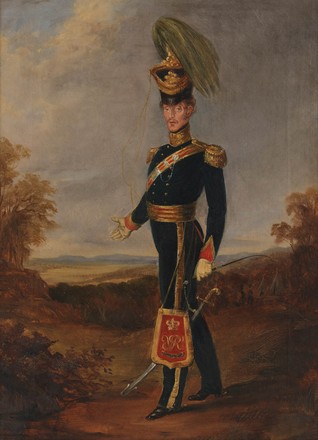
Colonel James Nunn, Australian Mounted Infantry (1837-1846), c. 1840
Oil on canvas
ML 1321
Purchased October 2014
Nunn arrived in New South Wales in 1837 with the 80th Regiment of Foot and became commander of the NSW Mounted Police in the same year. In December, reports were received that Aboriginal warriors had attacked and killed stockmen on properties beyond the limits of settlement in the Namoi River district. Nunn was dispatched with two sergeants and twenty troopers. On 26 January 1838, near the Gwydir River, his party was attacked and a corporal wounded. In retaliation the troopers opened fire and a number of Aboriginal people were killed. The Mounted Police then pursued the Aborigines and engaged them again, killing more. This event is now known as the Waterloo Creek Massacre.


 Back to list
Back to list